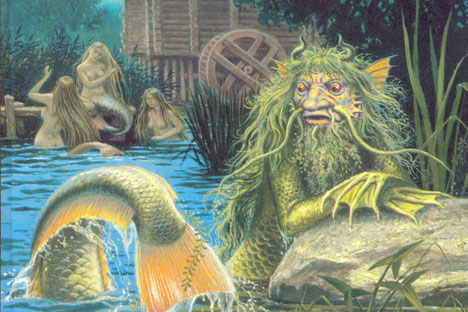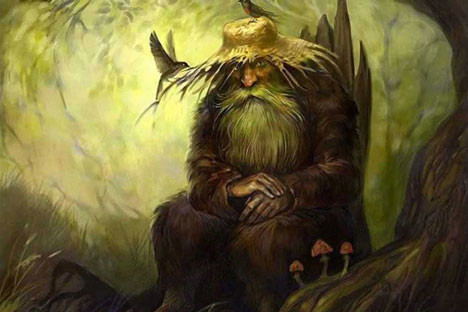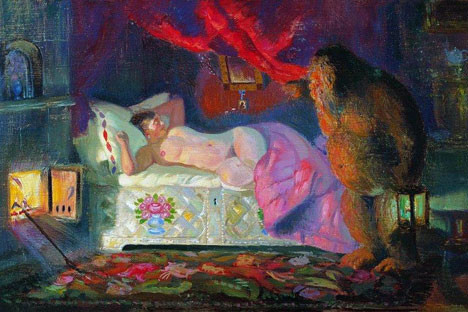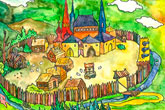Scary monsters: Russia’s creatures of folklore live on
In the 10th century, Russia adopted Christianity. But in some regions, the new religion had to be introduced with the use of coercion, since the Slavic peoples already had powerful pagan cults they were reluctant to give up.
The principal pagan gods were denounced, but the belief in local spirits refused to die out: For centuries, they warned people against natural dangers like drowning, carbon monoxide poisoning, or forest predators. Fairytale spirits also “taught” people to be polite, tidy, and hard-working.
Vodyanoi

The Vodyanoi (literally “the one in the water”) is widely featured in
A vodyanoi is much more than a simple merman (mermen and mermaids were his servants and children) – he is the king of the underwater
The rules of communication with a vodyanoi are simple. At night, any interactions with rivers and lakes were forbidden – be it fetching water, crossing or fishing. As for swimming, it was outlawed on big holidays, when many people were drunk; and it’s totally wrong to brag of your swimming skills and endurance at all times – the vodyanoi likes boasters most of all.
He doesn’t kill those who drown; he just takes them to his realm to serve him forever. That is why victims of drowning (as well as suicides) were not buried at Orthodox cemeteries – it might upset vodyanoi and cause drought or hail.
Leshiy

Leshiy(“the one in the woods”) is the most frightful, yet the most cheerful folklore spirit. Enormously tall and covered in animal-like fur, he is the master of all forest creatures. The
His favorite joke is to make you lose your direction in the woods – sometimes he does this by posing as a relative and offering to guide you home. But you can tell
The
To avoid being confused or chased by
But it’s better not to mess with
Domovoi

There is no doubt that the domovoi (“the one at home”) is the foremost of all Russian spirits. Just like the British brownie, he lives inside homes and can help with household chores for a small edible reward, but that’s about all the similarities.
While brownies are small numerous creatures, a domovoi belongs to a certain family’s home and represents the spirit of the forefather – that is why he is often called “grandpa” and is said to be
As a forefather, the domovoi cares about his kin and helps around the house – and sometimes, he can steal things for his own use. Living under the stove, in the most unholy and dirty place in the house, the domovoi is always
His classic image
To avoid this, there are also some rules to follow. When leaving the house for a long time, one should “take a
At night, no cutlery or human food should be left on the table – the domovoi might use these for his own purposes or make the food “unclean”. No swearing is allowed in the house, especially at the dining table – the domovoi, like all other spirits, detests and fears
While contemporary Russians, who live mostly in cities and towns, can rarely encounter vodyanoi or
Because these days there are no stoves, and it seems that “smothering” by domovoi was a way Russian people explained carbon monoxide poisoning, which occurred very often in houses with no chimneys. As times move on, Russian folk spirits are slowly fading away, but they remain an important part of Russian culture.
All rights reserved by Rossiyskaya Gazeta.
Subscribe
to our newsletter!
Get the week's best stories straight to your inbox
